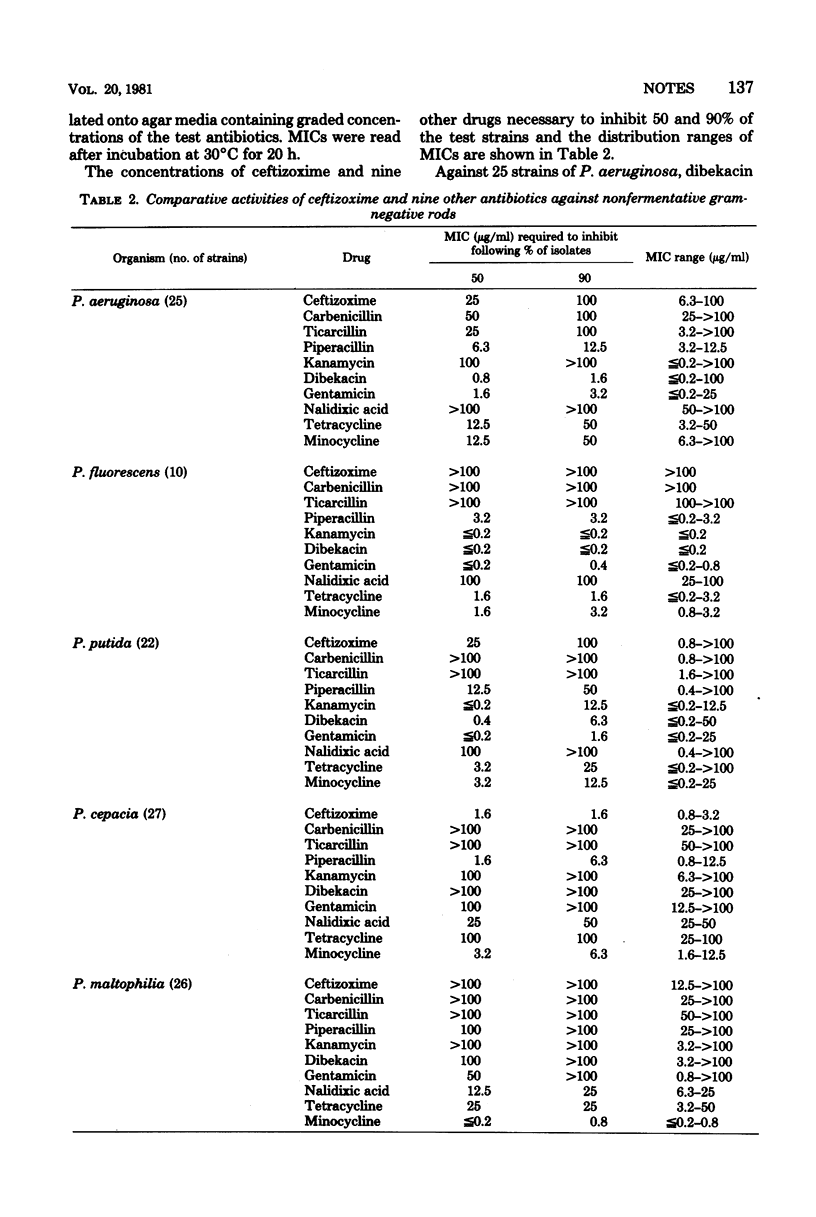Abstract
Ceftizoxime, a new cephalosporin, was active against Pseudomonas cepacia, Flavobacterium meningosepticum, Alcaligenes faecalis, and Acinetobacter calcoaceticus and was more potent against Pseudomonas aeruginosa and Pseudomonas putida than was carbenicillin.
Full text
PDF



Selected References
These references are in PubMed. This may not be the complete list of references from this article.
- Fu K. P., Neu H. C. Antibacterial activity of ceftizoxime, a beta-lactamase-stable cephalosporin. Antimicrob Agents Chemother. 1980 Apr;17(4):583–590. doi: 10.1128/aac.17.4.583. [DOI] [PMC free article] [PubMed] [Google Scholar]
- Kamimura T., Matsumoto Y., Okada N., Mine Y., Nishida M., Goto S., Kuwahara S. Ceftizoxime (FK 749), a new parenteral cephalosporin: in vitro and in vivo antibacterial activities. Antimicrob Agents Chemother. 1979 Nov;16(5):540–548. doi: 10.1128/aac.16.5.540. [DOI] [PMC free article] [PubMed] [Google Scholar]
- Pedersen M. M., Marso E., Pickett M. J. Nonfermentative bacilli associated with man. 3. Pathogenicity and antibiotic susceptibility. Am J Clin Pathol. 1970 Aug;54(2):178–192. doi: 10.1093/ajcp/54.2.178. [DOI] [PubMed] [Google Scholar]
- Yabuuchi E., Miyajima N., Hotta H., Oyama A., Tanaka N. Pseudomonas cepacia from blood of a burn patient. Med J Osaka Univ. 1970 Dec;21(1):1–6. [PubMed] [Google Scholar]


